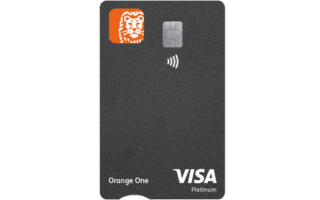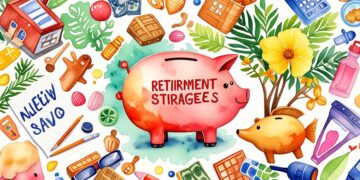How to deal with credit card debt

Understanding Credit Card Debt in Australia
Credit card debt represents a significant financial hurdle for many individuals in Australia. With statistics indicating that around 60% of Australians possess at least one credit card, the implications of sustaining such debt can be far-reaching. Many find themselves grappling with repayments that can quickly accumulate beyond their control, emphasizing the need for strategies that not only manage but also mitigate this financial burden.
Implications of Credit Card Debt
The repercussions of unregulated credit card debt are manifold and can lead to damaging long-term effects. For instance, one of the primary concerns is the high-interest rates associated with credit cards, which can average anywhere from 13% to 25% in Australia, depending on the issuer. This variability results in the debt spiraling often due to unpaid balances, as interest compounds each month on outstanding amounts.
Moreover, maintaining high credit card balances may adversely affect an individual’s credit score. A credit score that falls below the acceptable threshold can hinder future borrowing opportunities, such as obtaining a mortgage or securing a personal loan. Financial institutions typically assess credit scores rigorously, and a history of missed payments or high credit utilization ratios can result in unfavorable lending terms.
Beyond financial implications, the burden of credit card debt can lead to significant financial stress, which may also contribute to mental health issues such as anxiety and depression. Studies have indicated a direct correlation between financial distress and declining mental health, establishing credit management as an essential aspect of overall wellbeing.
Strategies to Manage Credit Card Debt
Fortunately, various practical strategies are available for managing and reducing credit card debt. One of the first steps individuals can take is to create a detailed budget that considers all sources of income alongside regular expenses. This comprehensive overview will enable individuals to identify areas where they can reduce spending and allocate more funds towards debt repayment.
Another crucial method is prioritising payments according to interest rates. For example, if one credit card has a significantly higher interest rate than another, it is prudent to focus payments on that card first while making minimum payments on others. This approach reduces the overall interest paid and accelerates the journey toward debt elimination.
Additionally, exploring options for debt consolidation could offer relief in the form of lower interest rates. Individuals might consider consolidating multiple high-interest debts into a single loan with more favorable terms. Institutions such as credit unions and certain banks often provide such services, simplifying the repayment process and potentially reducing financial stress.
Conclusion
Debt management is a critical skill in achieving financial stability. By employing a combination of budgeting, prioritisation, and potentially seeking consolidation options, individuals can take significant steps towards regaining control over their finances. Commitment to these strategies not only improves financial circumstances but also contributes to better mental health and overall quality of life.
CHECK OUT: Click here to explore more
Strategic Approaches to Credit Card Debt Management
Effectively addressing credit card debt requires individuals to implement a variety of strategic financial management techniques. An in-depth understanding of one’s financial situation is essential for making informed decisions concerning debt reduction. Below are several practical steps that can significantly assist in the management of credit card debt.
- Create a Comprehensive Budget: Developing a detailed budget serves as the foundation of effective debt management. Begin by cataloging all sources of income, including salaries, bonuses, and any side income. Following this, identify monthly fixed expenses such as rent or mortgage, utilities, groceries, and transportation costs. This helps individuals understand their spending patterns and facilitate better financial decision-making. Calculate disposable income by subtracting necessary expenses from total income, allowing for a clear designation of funds available for debt repayment. Including an emergency fund in this budget is also vital, as unforeseen expenses often arise, ensuring that debt repayment can continue uninterrupted.
- Assess Current Debt: Creating a full inventory of all credit card accounts is another critical step. This should encompass current balances, interest rates, and minimum payment requirements for each card. For instance, if one has multiple cards with different interest rates, understanding these details allows for informed decision-making on which debts to prioritize. This assessment helps individuals prioritize payments—focusing on higher-interest debts first can save money in the long run.
- Set Realistic Goals: Establishing clear, realistic goals for debt repayment is vital to maintaining motivation. Whether it means paying off a particular credit card within a set timeframe or attempting to reduce total debt by a certain percentage, well-defined objectives can steer individuals toward achieving financial freedom. For example, aiming to reduce credit card debt by 20% within six months can be a tangible target that encourages consistent efforts.
- Implement the Debt Snowball or Avalanche Method: Utilizing effective debt repayment strategies is crucial for managing credit card debts successfully.
- The Debt Snowball Method focuses on tackling the smallest debts first, which can yield quick wins and foster motivation. For example, if someone has several debts totaling $2,000, they might start by paying off the card with a $200 balance first.
- Conversely, the Debt Avalanche Method prioritizes repayment of debts with the highest interest rates, thereby minimizing the total interest paid over time. For instance, if one card has an interest rate of 20%, focusing on this debt first can lead to substantial savings in interest payments.
- Consider Professional Financial Advice: Seeking guidance from a financial advisor can yield personalized strategies and recommendations for managing credit card debt effectively. A professional can provide insights into debt management plans, negotiation techniques with creditors, and help in establishing a sustainable financial strategy tailored to individual needs and circumstances. This is especially beneficial for Australians, as advisors can navigate local laws and consumer protections that may affect repayment options.
It is essential to understand that reducing credit card debt is a gradual process requiring commitment and patience. Implementing these strategies is not merely a quick fix; it necessitates perseverance and an ongoing commitment to financial health. By staying informed and diligently working towards their financial goals, individuals can mitigate the adverse effects of credit card debt, ultimately paving the way for a more secure financial future. The journey towards financial stability may be challenging, but the long-term benefits of achieving debt freedom are immeasurable.
SEE ALSO: Click here to read another article
Advanced Strategies for Credit Card Debt Relief
In addition to the foundational strategies highlighted earlier, there are advanced methods available for effectively managing credit card debt. These techniques require deeper financial awareness and proactive engagement with creditors, empowering individuals to take control of their debts. Here are several advanced strategies that can be beneficial in addressing credit card debt:
- Negotiate with Creditors: Engaging directly with credit card issuers can result in favorable modifications to one’s debt repayment terms. Many creditors are willing to negotiate lower interest rates, increased payment flexibility, or even settlement offers for those who demonstrate genuine financial hardship. For example, if an individual is facing difficulty meeting minimum payments, contacting the credit card company to discuss options may yield a temporary hardship program or a lower interest rate, significantly reducing monthly obligations.
- Explore Balance Transfer Offers: Balance transfer credit cards can serve as a powerful tool for debt management. These cards typically offer promotional periods with 0% interest on transferred balances, allowing debtors to pay down principal amounts more efficiently. However, individuals must be cautious and avoid accruing additional debt on the old cards, as the promotional period will end and the remaining balance may be subject to high-interest rates. An example could include transferring a $5,000 balance to a card with a 12-month 0% interest offer, thus allowing time to pay off the balance before incurring interest charges.
- Consider Debt Consolidation Loans: Applying for debt consolidation loans may provide a streamlined approach to managing credit card debt. This option involves securing a loan to pay off multiple credit card debts at once, ideally with a lower interest rate. By consolidating debts into a single monthly payment, individuals can simplify their financial management and may reduce the overall interest paid. Caution is advised, however, as this method should only be pursued if the interest rate on the consolidation loan is significantly lower than existing credit card rates.
- Utilize Financial Literacy Resources: Increasing financial literacy is critical in understanding how to navigate credit card debt effectively. There are numerous resources available, including online courses, community workshops, and financial counseling services. For example, the Australian Securities and Investments Commission (ASIC) provides a range of educational materials that inform consumers about budgeting, understanding fees, and managing credit effectively. Enhanced knowledge can empower individuals to make better financial choices and avoid repeating past mistakes.
- Maintain an Open Dialogue with Family and Friends: Building a support network can play an essential role in managing credit card debt. Sharing financial struggles with trusted family members or friends may result in moral support and practical advice. Some may even be able to offer temporary financial assistance, allowing individuals to focus on reducing high-interest debts. Establishing accountability with loved ones can help individuals stay committed to their financial goals.
With the right strategies in place, individuals can effectively take charge of their credit card debt and work toward reduction and eventual elimination. It is essential to frequently reassess progress and remain adaptable, as personal financial situations may evolve over time. By employing a multi-faceted approach that combines negotiation, effective resource management, and continuous education, individuals can navigate the complexities of credit card debt and forge a clearer path toward financial wellness.
CHECK OUT: Click here to explore more
Key Takeaways for Effective Credit Card Debt Management
In conclusion, effectively managing credit card debt requires a combination of practical strategies, financial awareness, and resilience. Understanding the core principles of budgeting and maintaining a disciplined approach toward spending is fundamental in preventing the escalation of debt. This involves creating a detailed budget that outlines essential living expenses, debt obligations, and discretionary spending. For instance, Australians may find it beneficial to utilize general budgeting apps, which can help track spending patterns and identify areas where cuts can be made, ensuring that funds are allocated efficiently towards debt repayment.
A crucial aspect of credit card debt management is implementing key methods such as negotiating with creditors. Many financial institutions are willing to work with customers who express an intention to repay their debts, potentially lowering interest rates or extending payment terms. Additionally, exploring balance transfer options can significantly reduce interest payments, allowing debtors to allocate more of their monthly payment towards the principal balance. Furthermore, considering debt consolidation loans can simplify multiple debts into one manageable payment with a lower interest rate, making it easier to pay down debt over time.
Continuous education and resource utilization play a critical role in empowering individuals to make informed financial decisions. Engaging with financial literacy resources, such as educational websites or local workshops, can enhance one’s understanding of personal finance and the implications of credit usage. For example, organisations like the Australian Securities and Investments Commission (ASIC) offer valuable free resources for better financial management. Moreover, cultivating a support network among family and friends not only offers emotional encouragement but may provide additional practical solutions during challenging times.
As personal circumstances can evolve, it is essential to regularly assess one’s financial situation to ensure that strategies remain effective. Persistence and proactive measures can lead to successful credit card debt management. Therefore, individuals should schedule periodic reviews of their budget and payment plans to adjust for changes in income or unforeseen expenses. By taking these steps, Australians can pave the way to long-term financial wellness, ensuring a brighter economic future free from the burdens of excessive debt, enhanced by informed decision-making and solid support systems.

Linda Carter is a writer and expert in finance and investments. With extensive experience helping individuals achieve financial stability and make informed decisions, Linda shares her knowledge on the Innovbs platform. Her goal is to provide readers with practical advice and effective strategies to manage their finances and make smart investment choices.





